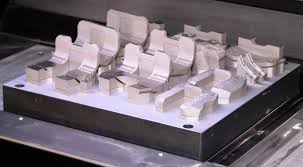
The Great War
The decline of the Ottoman Empire in 1914, lead to an unprecedented scale of uprising among the European nations leading to the polarisation of Europe. Countries across the globe witnessed casualties in millions. ‘The Great War’ showed no mercy while engulfing countries in dire disperse and devastation. The land and seaways were already preconceived and strategies were expected giving nations disadvantages. This led to the dire need for air support. The Wright Brothers had only made the world’s first powered flight little over a decade. But the remarkable advances made in aviation during World War I are still at the core of air power today.
‘The Great War’ is one of many examples of the use of air support and the introduction of Aerospace Revolution. Countries primarily participating in the war, such as USA, UK, France, Russia and Germany has learned their lesson in the benefits of Air Support and how it can help not only when it comes to defense but also to monitor geography, climate, and demography for the betterment of humanity. These countries grew exponentially in the Aerospace sector due to the constant competition in World War 1 and the wars which followed after that.
Opportunistic Strike
Looking at the opportunity, China preconceived the demand & prospects and started manufacturing components and exporting aerial vehicle parts to the then demanding nations. Thus, establishing a firm grip on the Aerospace industry decades before any other country even began manufacturing. The present scenario is very different, with the rise in demand for aerospace components; there is tremendous competition among countries and organizational bodies. India has also made a grand entry in this competition. We have not only created a mammoth Air Support fleet but are now exporting our resources and expertise. Investing heavily in Research & Development, the Indian government has been working hard to provide the necessary requisites for proliferation. The ‘Make in India’ initiative has also provided a boost to the Indian manufacturing sector. Though in the past few decades Indian Automotive industry has shown huge potential, the Aerospace industry is also not far behind. It is witnessing steady growth thanks to the industry-friendly policies by the government.
Indian Scenario
The policies are benefiting both private and government bodies to work on the next gen of Aerospace Manufacturing. Government organizations such as Hindustan Aerospace Limited (HAL) and Defence Research and Development Organization (DRDO) in collaboration with Russian Intel have successfully entered the turf, getting at par with Aerospace giants such as Russia, USA and France to name a few. Privately owned companies such as TATA Advanced Systems, Godrej Aerospace, Mahindra Aerospace, and Aequs among others are also delivering more tangible inputs in terms of R&D, components, tools and expertise which tackle the booming market demand. After the failure of the Kaveri Engine, DRDO and ISRO saddled up to make sure it never happens again. Extensive research went into the project to develop the engine, finally, GTRE GTX-35VS Kaveri was introduced in the first ever fully Indian made Combat Aircraft HAL Tejas. It is one of many examples of the extraordinary feats achieved by Indian Aerospace Sector.
There are five factors driving the growth of Indian Aerospace industry, viz. framework, government policies, infrastructure, competing industries and manpower. Backed by a pool of abled workforce and skilled engineers, government policies, and funding, the Indian aerospace industry has witnessed remarkable growth.
All this wouldn’t have been possible without the passionate involvement of the OEMs and parts manufacturers across the country that provides the necessary components. Beside that machine and tools manufacturers also play a vital role in providing the technology needed to ease the process and increase potential. To compete with other nations, we need to scale up and generate more focused architecture for aerospace manufacturing. Manufacturing units, part providers and die & mold makers should be dedicated to providing the resources necessary to facilitate the Indian industrial demand.
What does the future hold?
In this era of rapid technological development and never-ending need for manufactured products, Aerospace industry manifests a unique proposition where high value (accurate and optimized) parts with lesser numbers have to be produced. Here is where Additive Manufacturing (AM) comes in. AM is the missing link to leapfrog into the future of developing and producing critical components on demand. Thus, companies such as GE, Moog Aerospace, and MTU Aero Engines are working hard to incorporate AM into their current operating activities to streamline the development and production process for components. AM has it perks where complexity isn’t a barrier and not much of tooling is required, hence an advantage to test changes in component topology rapidly rather than simulating them virtually. Aviation giants, Boeing and Airbus are going big with AM technology for the long-term benefits it provides.
The inclusion of AM in Indian Aerospace manufacturing would be like a boon. Encouraging conventional manufacturers and industrialists to adapt to this technology can help reap good benefits in the future. This will not only lead the Indian manufacturing and tooling industry to the pinnacle of technological advancements but also boost Indian Economy leading to social harmony.
ABOUT AUTHOR:
Ankit Sahu is the Founder and CEO of Objectify Technologies. He holds a Masters degree in Manufacturing System Engineering from the University of Warwick. Ankit is passionate about the latest developments in manufacturing technologies, especially in the additive manufacturing domain.
